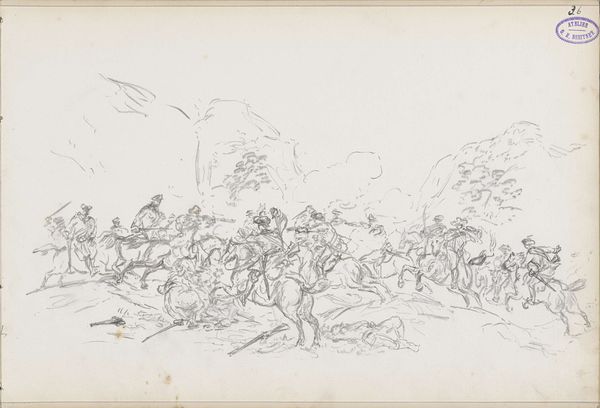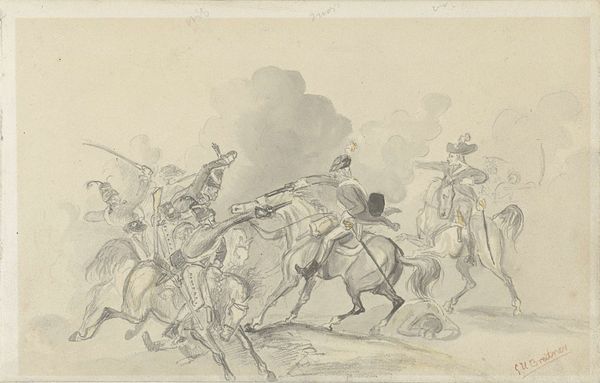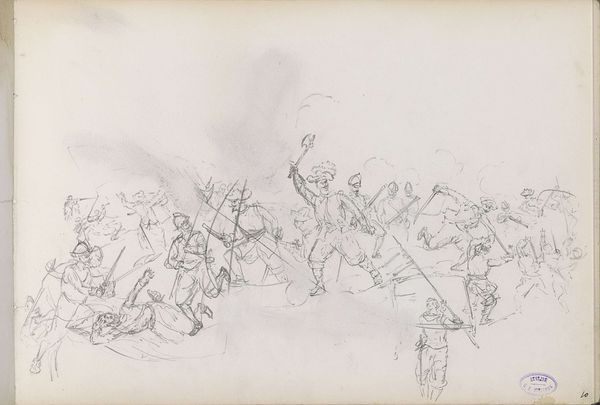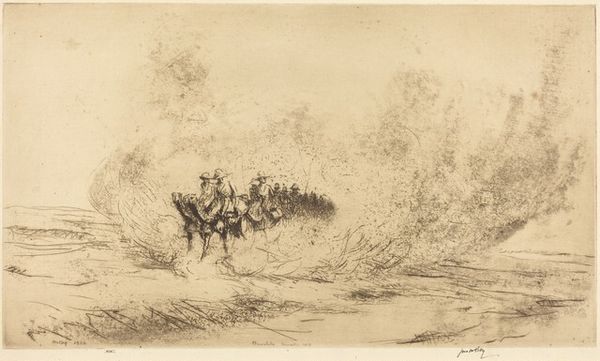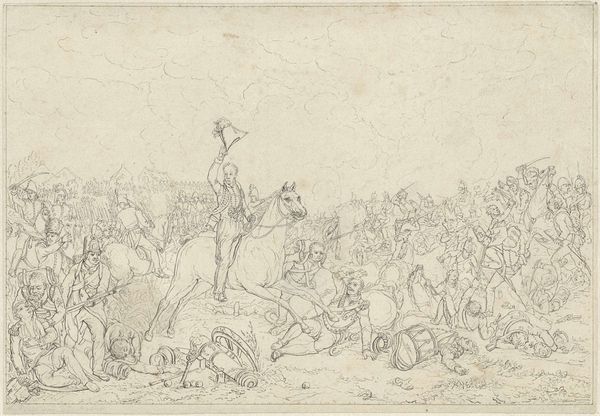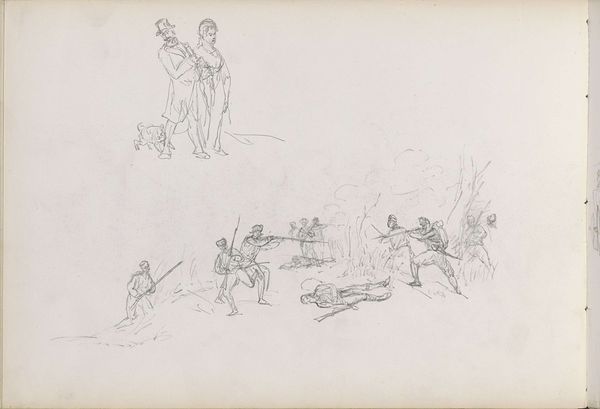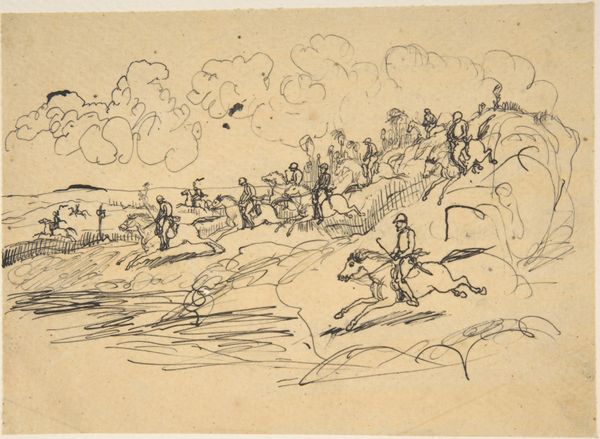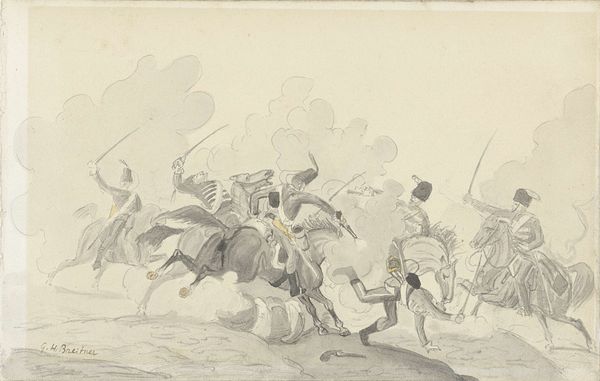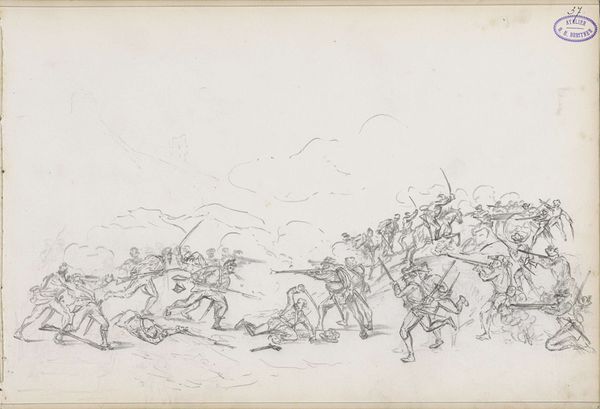
drawing, pencil
#
drawing
#
pencil sketch
#
pencil
#
history-painting
#
realism
Copyright: Rijks Museum: Open Domain
Editor: Here we have "Strijdende soldaten, te paard en te voet," or "Fighting Soldiers, on Horseback and on Foot," a pencil drawing from 1873 by George Hendrik Breitner. It feels quite dynamic, capturing the chaos of battle with swift lines, yet almost unfinished in its ethereal quality. What do you see in this piece from a formal perspective? Curator: Indeed. Immediately, I am drawn to the interplay between line and negative space. Breitner’s use of the pencil creates a remarkable tonal range, even without the exploitation of a full spectrum. The sketch foregrounds the tension through contrasts in its composition, presenting movement with layered figures juxtaposed against vast white background. Observe how the artist masterfully arranges these elements to draw the eye, creating dynamism and visual intrigue. Editor: The lack of distinct forms, how does that shape our understanding of it? Curator: Consider the lack of clear outlines not as a deficiency, but rather as a deliberate strategy to depict movement and instability. Notice how the absence of definitive shapes makes it feel as though this scene is ongoing, unfixed. What kind of symbolic engagement do we achieve from this incomplete portrayal? Does it allow us to place our reading, or obstruct such attempts? Editor: I suppose the ambiguity lends itself to varied interpretation, allowing us, as viewers, to imbue it with subjective understanding. I can appreciate that approach. Curator: Precisely. And that's part of what makes this, formally speaking, an engagement that is more involved than purely illustrative depiction.
Comments
No comments
Be the first to comment and join the conversation on the ultimate creative platform.
